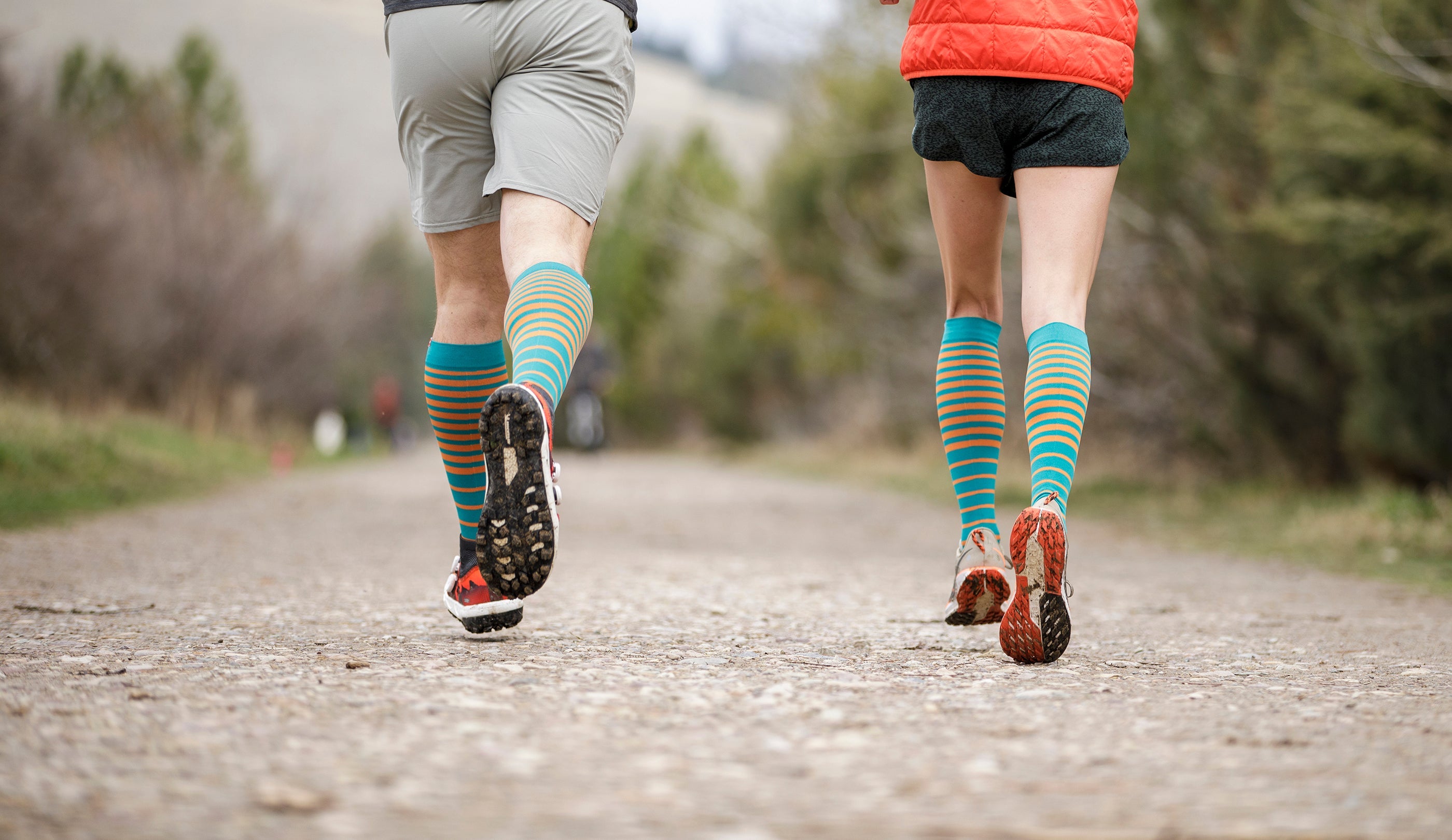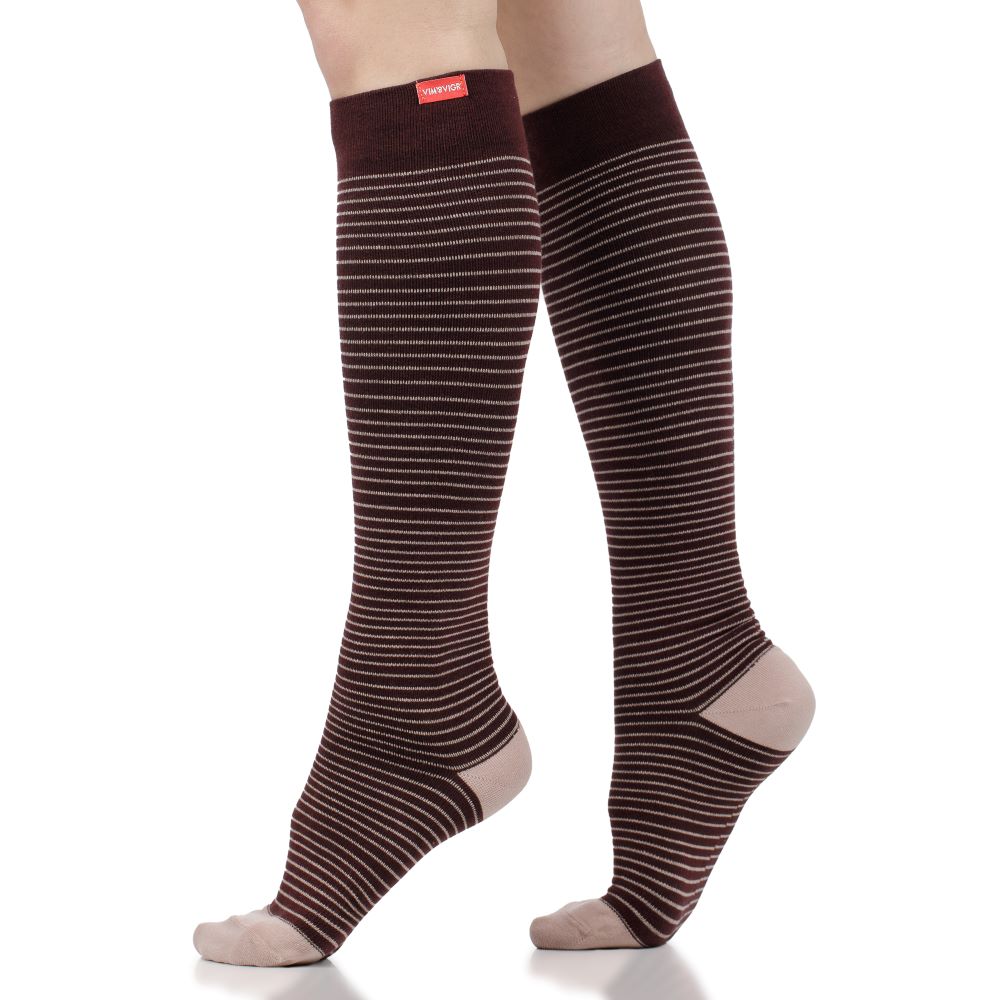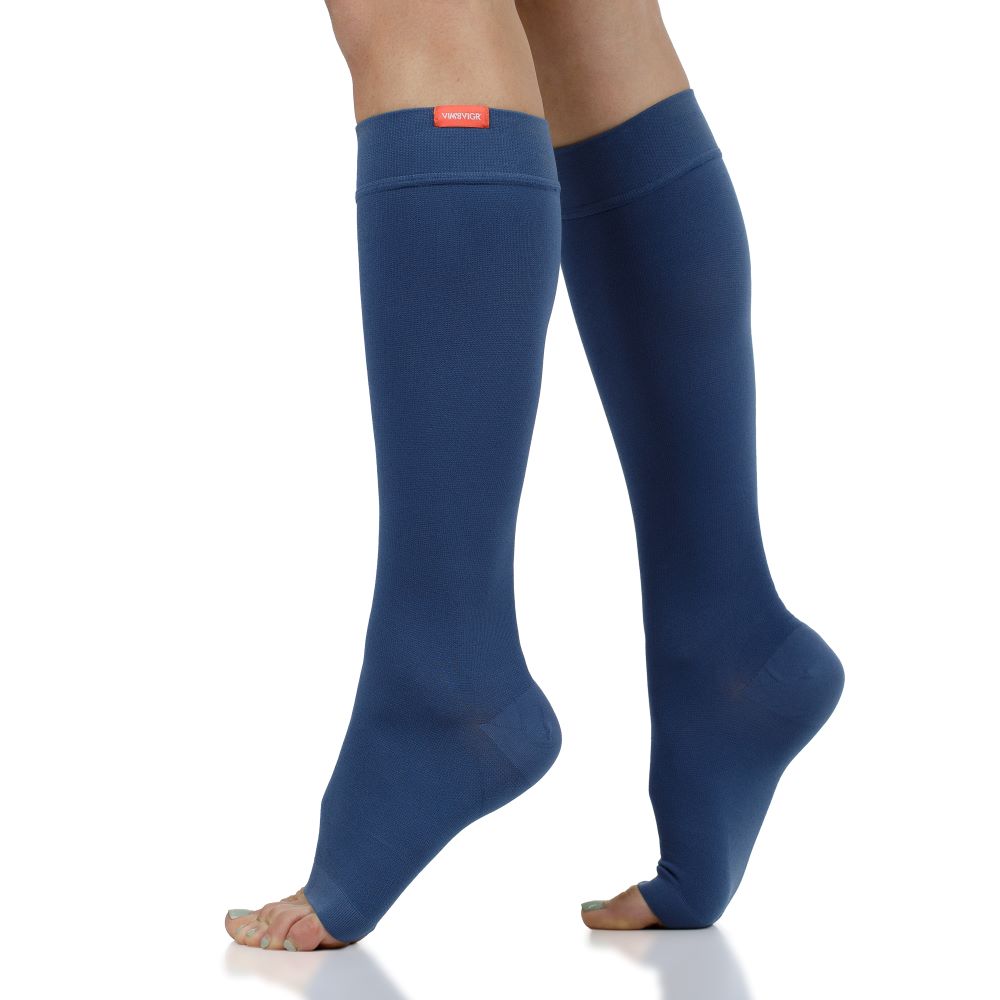How to Reverse Venous Insufficiency: 10 Actionable Tips
Written By Alecsa Stewart
Scientifically Reviewed by Daniel Chantigian
If you suffer from heavy legs, swollen legs, and lower limb pain, you may be dealing with venous insufficiency. Venous insufficiency happens when the veins in your lower limbs don’t function correctly and cause fluid buildup in your legs, and it affects 6 to 7 million people in the United States. This condition affects the blood flow out from the legs, and it can give rise to symptoms that can severely impact your wellbeing. While you cannot reverse damage to the veins (which is the root cause of chronic venous insufficiency), you can manage the symptoms and reverse the negative impact they have on your day-to-day life.
In this article, we will look at ways in which you can reverse symptoms of venous insufficiency - including answers to commonly asked questions about venous insufficiency.
Can Venous Insufficiency Be Reversed?
You cannot reverse the damage to the veins that leads to venous insufficiency, but you can reverse its symptoms. This means that you can reduce the feelings of tired, heavy legs, lower the likelihood of leg cramping at night, and reduce edema in the lower limbs. You can do this through a combination of lifestyle changes and by using effective tools like graduated compression socks and stockings.
How to Reverse Venous Insufficiency
To reverse the uncomfortable symptoms of venous insufficiency, we need to look at the main cause of venous insufficiency. One scientific report stated that venous insufficiency is caused mostly by aging, obesity, and genetics. There are valves in your veins that get damaged when dealing with too much pressure for too long or with inactivity.
Also, veins are often damaged by other health problems like deep vein thrombosis (DVT), which is caused or worsened by inactivity, being overweight, and having poor peripheral circulation.
1. Maintain a Healthy Weight
Leg veins often become damaged because of added pressure put on them by extra weight of their bodies. The UK National Health Service states that being overweight puts extra strain on the veins, making it harder for veins to pump blood back towards the heart. This then is made worse by aging, when veins start to lose some of their elasticity, with their valves no longer working as well as before.
To counteract this, you should try to stay at a healthy weight by exercising and eating well. Include fruits and vegetables in your diet and reduce consumption of highly processed foods and salty foods that can have a negative effect on your circulatory system. Keeping yourself at a healthy weight will put less strain on already damaged veins and reduce the likelihood of healthy veins being affected, too.
2. Stay Active with Regular Exercise
While exercising will help you stay at a healthy weight, it also has benefits for your heart health and for supporting healthy blood flow. A key study found that light strength training, aerobic exercise, and stretching 2 times a week could reverse some symptoms of venous insufficiency. Exercising 2 times a week was found to reduce pain, improve exercise ability, and improve quality of life.
People that exercise more have a lower risk of developing heart disease, according to an important scientific report. When exercising, your muscles stimulate blood circulation in the legs and throughout the body, which helps support a healthy circulatory system. Another study found that exercise improves venous insufficiency by reducing fluid retention in the legs. So, if you are suffering from chronic venous insufficiency, exercising regularly may be able to reverse symptoms of venous insufficiency.
3. Wear Compression Socks
Compression garments are the easiest way to reverse symptoms of venous insufficiency. Scientists and physicians even refer to them as the centerpiece of treatment in chronic venous disease, as long as patients wear them appropriately. Researchers have found that wearing compression socks and stockings can reverse symptoms of venous insufficiency. This includes improved peripheral circulation, reduced fluid buildup or edema, and reduced pain, among many others.
Graduated compression socks are designed to support those suffering from chronic illness and your doctor can prescribe medical-grade levels of compression as needed.
4. Elevate Legs When Resting
One reason you may feel sore, heavy legs is the pressure from gravity causing blood to pool in the lower extremities when sitting or standing for long periods of time. If you also have damaged leg veins, it is more likely that blood will pool in your legs and around your ankles, causing them to retain more fluid and swell.
To avoid this, elevate the legs so that gravity can help blood flow out of your legs and towards the heart. Keep your legs slightly higher than your heart for best results.

5. Avoid Prolonged Sitting or Standing
Those who work on their feet a lot, like nurses or teachers, will often complain of sore, heavy legs as well as swollen feet and ankles. The combination of gravity and damaged veins will make those suffering from venous insufficiency even more uncomfortable.
Take regular breaks from a desk job and walk around or stretch lightly. If standing for a long period of time, do some ankle rotations and leg stretches and, again, try to take some sitting breaks regularly.
6. Choose a Healthy, High-Fiber Diet
A healthy diet is essential for a well-functioning circulatory system, which will help reduce the symptoms of venous insufficiency. A diet high in fried foods has been found by one study to significantly increase the risk of chronic venous disease.
Eating balanced meals, ensuring you take in fiber, protein, good fats, and low amounts of sugar and salt, all contribute to maintaining good blood flow and reducing your weight. Losing weight reduces the pressure on your leg veins to help them function better, which lowers the risk of swelling and discomfort.
7. Stay Hydrated Throughout the Day
Dehydration strains your blood vessels and your heart and may increase symptoms of venous insufficiency. The Heart Foundation explains that dehydration can not only have a negative effect on the organs in your body, but also makes it harder for your body to circulate blood. This is because there is less water in your blood; one study found that dehydration might even make your blood almost 10% thicker.
You should aim to drink regularly throughout the day, not waiting until you feel really thirsty. The Mayo Clinic recommends that women drink 11.5 cups (2.7 liters) of fluids, while men need around 15.5 cups (3.7 liters). Keep in mind that about 20% of your fluid intake comes from food. Remember, these are indicative numbers and will vary with your weight, age, and activity levels.
8. Practice Leg Muscle Exercises
Stronger muscles help support your body in many ways, including relieving pressure on the veins. Strength training also stimulates healthy blood flow. This is why leg strengthening exercises can really benefit patients with venous insufficiency. It helps pump blood from the legs while improving circulation to the legs. However, ensure you do them in a controlled manner and increase your effort gradually, preferably with the help of a physical therapist or trained medical professional.

9. Quit Smoking If You’re a Smoker
Smoking is strongly linked with an increased risk of developing venous insufficiency. The Mayo Clinic states that smoking can lead to heart and cardiovascular disease, so quitting as soon as you receive a venous insufficiency diagnosis is essential to starting to reverse venous insufficiency symptoms.
10. Seek Medical Advice and Treatment Early
As with any health condition, getting a proper diagnosis and discussing your options with a doctor as soon as possible can help you find the best treatment before it becomes too advanced. If you routinely suffer from swollen legs and ankles, soreness in the lower limbs, cramps, or if you notice anything out of the ordinary, it’s time to speak to a medical professional. They will run the required tests to determine the degree of your condition and guide you through the steps to manage it in the best way possible.
Answering Your Commonly Asked Questions
What Causes Venous Insufficiency?
The most common cause of venous insufficiency is deep vein thrombosis, which causes blood clots that damage the veins. Those who have had DVT are at higher risk of developing venous insufficiency.
Additionally, risk factors include:
- Varicose veins (including having a history of the condition in your family)
- Obesity and/or lack of sufficient physical activity
- Pregnancy
- Smoking
- Jobs or lifestyles where you sit or stand for long periods of time
- Women are more at risk than men
- The risk increases as you advance in age
What Are the Symptoms of Venous Insufficiency?
There are many ways you may notice that your legs are changing when you suffer from this condition. The first and most obvious signs are swelling and painful or tired legs. You could also experience:
- Numbness or tingling
- Cramping, especially at night
- Skin discoloration
- Skin flaking or itching
- Ulcers and sores
- Varicose veins
How Is Venous Insufficiency Treated?
Depending on the severity of your condition, your doctor may prescribe different ways to treat and/or manage your venous insufficiency. In the first instance, lifestyle changes as listed above, elevating the legs, and reducing your weight form part of the treatment. Additionally, your doctor will prescribe compression therapy, either by wearing compression socks or using various methods like bandages, pneumatic devices, etc.
There are also some types of medication which can help with symptoms, such as antibiotics to treat ulcers and infections, or anticoagulants to treat blood clots. These will all need to be prescribed by a doctor. Finally, your doctor may look at some non-surgical and surgical procedures depending on the severity of your venous disease.
Reference
Patel SK, Surowiec SM. Venous Insufficiency. [Updated 2023 Jul 18]. In: StatPearls [Internet]. Treasure Island (FL): StatPearls Publishing; 2024 Jan-. Read it here.
Santler, B., & Goerge, T. (2017). Chronic venous insufficiency - a review of pathophysiology, diagnosis, and treatment. Journal der Deutschen Dermatologischen Gesellschaft = Journal of the German Society of Dermatology: JDDG, 15(5), 538–556. Read it here.
NHS Choices. (2019). Causes - Varicose veins. NHS. Read it here.
Gürdal Karakelle, S., Ipek, Y., Tulin, O., & Alpagut, İ. U. (2021). The efficiency of exercise training in patients with venous insufficiency: A double blinded, randomized controlled trial. Phlebology, 36(6), 440–449. Read it here.
Nystoriak, M. A., & Bhatnagar, A. (2018). Cardiovascular Effects and Benefits of Exercise. Frontiers in cardiovascular medicine, 5, 135. Read it here.
Silva, K. L. S., Figueiredo, E. A. B., Lopes, C. P., Vianna, M. V. A., Lima, V. P., Figueiredo, P. H. S., & Costa, H. S. (2021). The impact of exercise training on calf pump function, muscle strength, ankle range of motion, and health-related quality of life in patients with chronic venous insufficiency at different stages of severity: a systematic review. Jornal vascular brasileiro, 20, e20200125. Read it here.
Eberhardt, R. T., & Raffetto, J. D. (2014). Chronic venous insufficiency. Circulation, 130(4), 333–346. Read it here.
He, J., Ma, F., Yao, J., Premaratne, S., Gao, H., Xu, Z., Li, J., You, T., Du, X., Xu, H., Yu, Y., Zhang, Q., Jiao, L., Zhang, J., Ma, T., Su, X., Zhang, W., Wang, S., Sun, L., Hao, B., … Yang, T. (2023). Dietary Effects on Chronic Venous Disease. Annals of vascular surgery, 88, 257–267. Read it here.
Mayo Clinic. (2020b, October 14). Water: How much should you drink every day? Mayo Clinic; Mayo Clinic. Read it here.


















Leave a comment